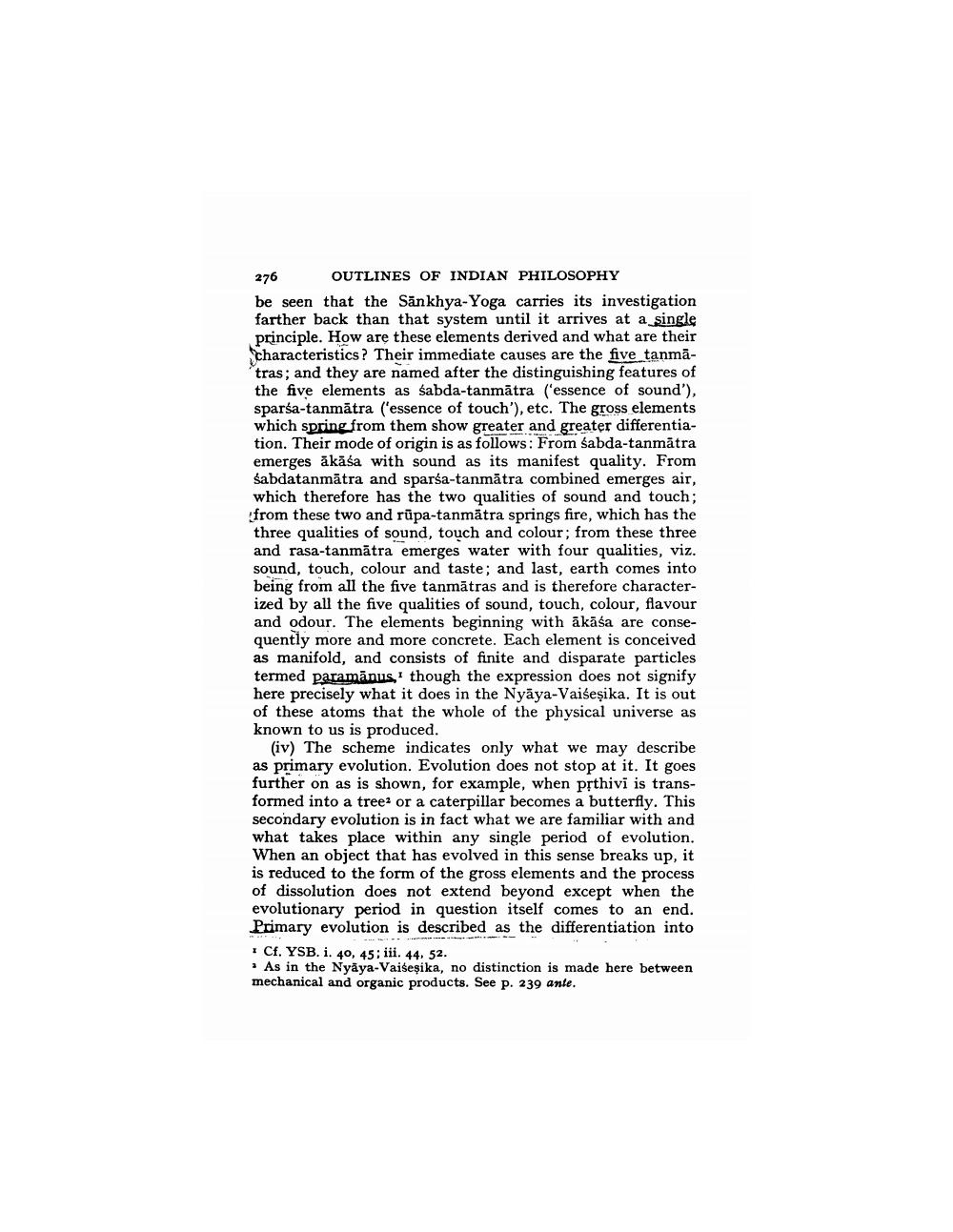________________
276
OUTLINES OF INDIAN PHILOSOPHY be seen that the Sankhya-Yoga carries its investigation farther back than that system until it arrives at a single principle. How are these elements derived and what are their characteristics? Their immediate causes are the five tanmātras; and they are named after the distinguishing features of the five elements as sabda-tanmātra ('essence of sound'), sparsa-tanmātra ('essence of touch'), etc. The gross elements which spring from them show greater and greater differentiation. Their mode of origin is as follows: From sabda-tanmātra emerges åkāśa with sound as its manifest quality. From sabdatanmātra and sparsa-tanmātra combined emerges air, which therefore has the two qualities of sound and touch; from these two and rupa-tanmātra springs fire, which has the three qualities of sound, touch and colour; from these three and rasa-tanmätra emerges water with four qualities, viz. sound, touch, colour and taste; and last, earth comes into being from all the five tanmātras and is therefore characterized by all the five qualities of sound, touch, colour, flavour and odour. The elements beginning with ākāśa are consequently more and more concrete. Each element is conceived as manifold, and consists of finite and disparate particles termed paramānus, though the expression does not signify here precisely what it does in the Nyāya-Vai eşika. It is out of these atoms that the whole of the physical universe as known to us is produced.
(iv) The scheme indicates only what we may describe as primary evolution. Evolution does not stop at it. It goes further on as is shown, for example, when prthivi is transformed into a tree or a caterpillar becomes a butterfly. This secondary evolution is in fact what we are familiar with and what takes place within any single period of evolution. When an object that has evolved in this sense breaks up, it is reduced to the form of the gross elements and the process of dissolution does not extend beyond except when the evolutionary period in question itself comes to an end. Primary evolution is described as the differentiation into
Cf. YSB. i. 40, 45: iii. 44, 52. * As in the Nyaya-Vaiseșika, no distinction is made here between mechanical and organic products. See p. 239 ante.
-
--




